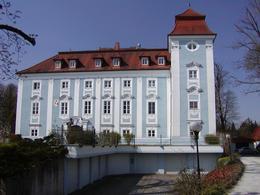Schloss Lichtenegg Castle
Wels, Oberösterreich, Österreich
Ludwig von Polheim built the water castle Lichtenegg in the middle of the 16th century. After 1613, it belonged to his grandchildren, Schallenberg, Kazianer and Seeau.
The Welser architect Wolfgang Grinzenberger is responsible for the present appearance of the castle, when he changed the looks in 1726. The former moat had been abandoned long before that. When Sissi’s daughter, Archduke Valerie, and her husband moved in the castle at the end of the 19th century, they modified it once more. Due to the restoration after the bomb damage of 1944 the castle’s appearance changed again.
Today the castle is an apartment building.
For further information, please contact:
Magistrat der Stadt Wels, Stadtarchiv
Maria-Theresia-Straße 33
4600 Wels
+43 7242 235-7680
4600 Wels
Phone +43 7242 67722 - 22
E-Mail info@wels.at
Web de.wikipedia.org/wiki/Wasserschloss…
https://de.wikipedia.org/wiki/Wasserschloss_Lichtenegg
Contact person
Schloss Lichtenegg
Schloss Lichtenegg
Lichtenegg 1
4600 Wels
Phone +43 7242 67722
E-Mail info@wels-info.at
- Can only be viewed from outside
- Suitable for single travelers
- Suitable for friends
- Suitable for couples
Please get in touch for more information.



